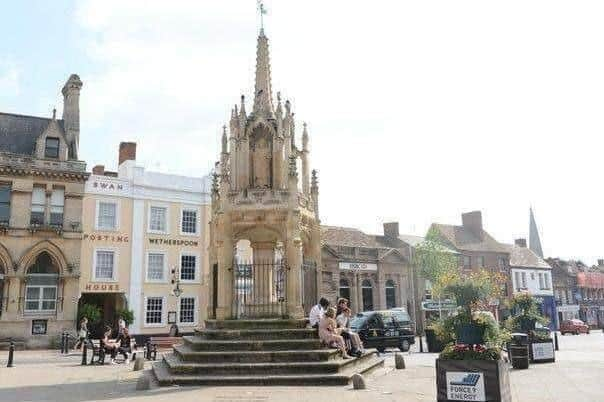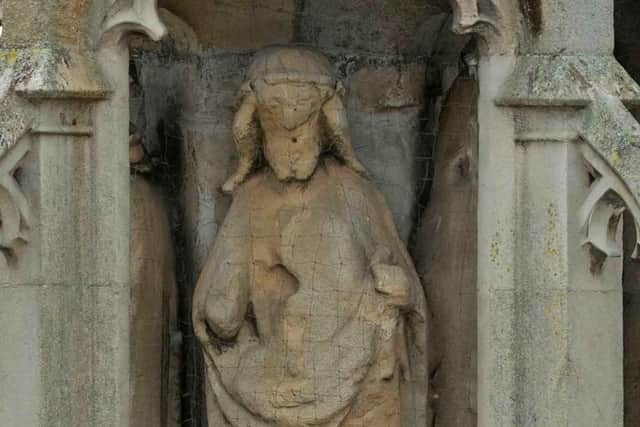Work starts on conserving major Leighton Buzzard landmark
and live on Freeview channel 276
Leighton Buzzard’s historic market cross is undergoing major conservation work to save it for future generations.
Trustees of the charity Town Lands Trust, which is paying for the work, have been putting posters on hoardings around the monument to explain some of the work being carried out.
The conservation work is expected to take about six months.
Advertisement
Hide AdAdvertisement
Hide Ad

The market cross has been a focal point in Leighton Buzzard since the time of Chaucer; his grand daughter Alice is thought to have commissioned the cross.
Trustee Nick Whitehouse said: “The market cross is a symbol of the grant of a charter for the town. It’s been a meeting point for people ever since the Middle Ages.
"It’s about conserving rather than replacing what it there and it’s great that we have managed to secure an architect for the project – Rena Pitsilli-Graham – who is at the top of her game.
"The plan is to miss any activity in the High Street so we should finish by late autumn. If nobody notices what we have done then we have been successful.”
Advertisement
Hide AdAdvertisement
Hide Ad

Specialised tradespeople have been appointed, including a stonemason. Work is also being carried out to rebuild and regild the weather vane on the top of the structure.
"We have asked for some guidance on how long we should revisit and redo things and have been told probabaly about 20 years,” said Nick.
The charity exists to help with the upkeep of the market cross and to assist the population of Leighton Buzzard. Nick says it works behind the scenes to help with groups such as the local foodbank.
The cross was repaired in 1650 with major repairs in 1852 and in the early part of the 20th century. Physical evidence on site and some documentary evidence also testify to various repairs in the latter half of the 20th century.
Advertisement
Hide AdAdvertisement
Hide AdIt has an unusual pentagonal plan, set on a plinth of seven steps, forming a tall base for the monument.
The five figures were relocated in the mid 19th century with replacements carved – but were returned to their original position in the early 19th century as the replacements decayed to a greater extent than the originals.